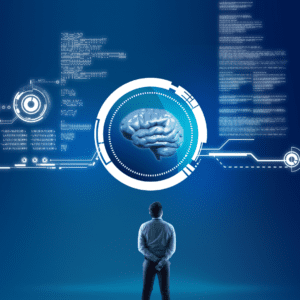Let’s say you need to build an AI customer service chatbot. Even if your model is fine-tuned with a specific training dataset, it would be ineffective without access to data like past conversations or product information stored in customers’ CRMs, documents, or ticketing systems.
To use this contextual data, you need to integrate it with your LLMs. This involves data ingestion from third-party sources and choosing between RAG and fine-tuning to use the data effectively.
But what’s the best approach—fine-tuning or Retrieval Augmented Generation (RAG)? This article provides a detailed comparison of them.

Retrieval Augmented Generation (RAG)
RAG enhances the accuracy of LLMs by retrieving external data on-demand and injecting context into prompts at runtime. This data can come from various sources such as customer documentation, web pages, and third-party applications like CRMs and Google Drive.
Key Components of RAG
Data Ingestion and Storage:
- Initial Ingestion: Pull all relevant customer data initially.
- Ongoing Updates: Use background jobs to keep data updated in real-time.
- Embeddings and Storage: Store the data in a vector database for retrieval.
Prompt Injection:
- At Runtime: Retrieve relevant text chunks from the vector database and inject them into the initial prompt/query for the LLM to generate the final response.
Fine-Tuning
Fine-tuning involves further training a pre-trained LLM on a domain-specific dataset to improve its performance on specific tasks. For example, fine-tuning a model on sales emails to build an AI sales agent.
Challenges of Fine-Tuning
- Data Preparation: Requires a clean, well-structured training dataset.
- Predictable Results: Produces more predictable results but is time-consuming.
RAG vs. Fine-Tuning: Which to Choose?
When to Use RAG
- Injects real-time context into prompts.
- Does not require a structured training dataset.
- Retrieves relevant context from multiple data sources.
When to Use Fine-Tuning
- When you have a specific, well-prepared dataset for training.
- For tasks requiring predictable results.
Implementing RAG

Data Ingestion
Identify where your contextual data resides, such as in Notion, Google Drive, Slack, Salesforce, etc. Build mechanisms to ingest both existing data and updates.
Data Chunking and Embedding
Most contextual data is unstructured. Use chunking strategies and generate embeddings to vectorize the data for similarity searches.
Storing and Retrieving Data
Store embeddings in a vector database for quick retrieval. At runtime, perform similarity searches to retrieve relevant data chunks and include them in prompts.
Security and Permissions
Ensure secure storage and proper permissions to prevent data leaks. Consider using enterprise-level LLMs or deploying separate instances for each customer to enhance security.
Fine-Tuning Process

Data Ingestion and Preparation
Ingest data from external applications and prepare clean training datasets. Validate these datasets to ensure quality inputs.
Training and Validation
Fine-tune the model with the prepared datasets. Validate the model to ensure it meets performance criteria before deployment.
Reinforcement Learning
Implement reinforcement learning loops in production to continuously improve the model using user feedback.
Both RAG and fine-tuning are valuable for integrating external data to enhance LLM outputs. Given the complexities of building robust training datasets, starting with RAG is generally more beneficial. However, in many cases combining both approaches may become essential.
At NextBrain AI, we use the latest AI technology to deliver precise data analysis and actionable business insights, without the complexities often associated with technical implementations. Schedule your demo today to experience firsthand how our solution operates.


 +34 910 054 348
+34 910 054 348 +44 (0) 7903 493 317
+44 (0) 7903 493 317